Hieronymus Bosch with Friends, Fakers and Followers - All at Gemäldegalerie
- Christian Hain
- Nov 18, 2016
- 6 min read
Updated: Mar 24, 2020
(Berlin.) A serious art collector, you are not in Berlin, not now, not in November. The fair-y season has not yet begun in Miami, and it’s still too early for that Swiss chalet of yours, but Yalong Bay should be nice this time of year, we’re sure. You are anywhere but in Berlin, you would not come here, if the weather were normal with rain at 10° Celsius (50° F). This year it’s not normal, it’s worse. Berlin has skipped autumn, and winter followed right on summer. It’s freezing. No, if you can afford it, you stay away, and no art exhibition could convince you to do otherwise. You leave that to us. It’s a tough job but someone needs to do it. Yes, it’s freezing hell, and it sort of fits today’s show: Hieronymus Bosch at Gemäldegalerie. 2016 not only marks the twenty years of Hamburger Bahnhof, but also the 500th anniversary of the death of Hieronymus Bosch, you judge for yourself which is the more important.
After the summer “experience”, it’s time for the real stuff at a serious institution that is the Gemäldegalerie (“Painting/Picture Gallery”).
I arrived at 6:20 p.m. on the 10th day of November in AD 2016, knowing the show would not open before seven, but a curious facebook post that same morning had mentioned possible waiting lines. Also I had other projects for the later evening. The idea was to get in, do the job and get out as fast as possible.
The Gemäldegalerie with its many exhibition rooms, offices and libraries was, of course, open all day. Entering, I saw no posters, no signs, nothing Bosch-related, but many rows of chairs in the lobby downstairs. I froze. Then prayed, this were just another Franz West installation. I refused to accept the obvious. In desperate denial, I turned left, El Siglo de Oro was still on, and asked a person at the counter there: “Bosch, here, tonight?” “That would be downstairs”, she replied with a cruel smile that I might have only imagined. I surrendered to fate and trudged downstairs, head bowed, heavy-hearted (feel free to insert one more cliché phrase of your choice if you feel there were not enough in here already), knowing all too well what to expect: Speeches.
Use- and endless speeches, the curse of German, and German only, opening receptions.
I took a seat in the second to last row, and curled up in resignation. Openings are free of charge, indeed, but the price to pay is to endure the sermon(s). Thanks God, I had brought a book, and a notebook, I started to write these very lines. At 6:40, I got up again and approached an officious looking lady with a clipboard. No, it would not be possible to enter the show before the festivities were over. No, she could not tell me how long it would be. This would be hell, worse than every Boschian vision. There is not even free wifi at Gemäldegalerie. I should have gone to the press conference this morning, but my request for accreditation was left unanswered, and I have a feeling my future ones will be too. Furthermore, I had told myself: “I only want to see the art (for free), who needs a press conference?”. I had preferred to work on another text. And now, it was all the same. I moved a seat further away from the aisle, so they would not see me read. It was a bad decision. More and more people arrived seeking shelter from the blizzard, they filled the space, all those countless rows of chairs. I had to put away the book, not to shove my elbows into somebody sitting left or right to me. Why did I not stay upstairs, there were people right now, standing, walking, escaping - moving around before the white walls like paper cuts?
7:02 p.m., some very important person approaches the mic and starts talking. In my half slumber I understand, they are proud. All works but one in the show belong to Berlin museums. They are very proud. The restoration of Bosch’s altarpiece of St. John on Patmos was challenging but successful, they are proud of the outcome. Everybody has done a tremendous work, they are tremendously proud. For the rest, nothing I could not have read in the calm of my flat, in much less time. A curator is next. I feel with him, he’s an old school scholar and there is nothing wrong with it, he does not want to be here, on stage, hiding behind the lectern. He loathes being stared at, he hates talking in public, when will it be over, oh when? We both suffer. Salvation – for him – arrives in form of a third speaker. "... Different times, different concepts of authorship. ... Copies and originals. ... A Bosch in the past could mean something in the style of ..." (This seems almost like the countless retellings of Greek drama throughout the centuries, I think.) He asks for patience when, shortly now, the show will open.
It’s 7:48 p.m., I leave and wonder, is it possible, no more than forty-five minutes have passed?! Time is relative, heaven and hell might last but the instant of finally closing your eyes, eternally. Upstairs, at the entrance to the show, a queue has formed already, of people who know the game. Downstairs, the speech continues.
What are all these people doing here? Do they think, there are artworks given out for free tonight? Are there any artworks given out for free tonight? Probably not. Caught inmidst the ever growing mass, a (false) rumour almost causes a stampede, “They will ask you to deposit your coat”. I am tempted to shout: “Bomb!”
More people arrive from downstairs. And more. A tall blonde gentleman in a plaid tweed suit, red vest, yellow scarp, successfully leads an attack on the lines, he breaks through and won’t come to a stop until he has reached a vantage point immediately in front of the door. He and his companion will enter long before me, with the first wave. You need to be ruthless to make it big. He looks vaguely familiar with his Mozart hair; a curator maybe, or a museum director. The glass doors shut in my face.
I finally make it in at 8:11 p.m. The masses push through the doors, through many rooms – another show – then arrive at Bosch, a first part, but before, there is more waiting on the threshold. Once inside, I hardly catch a glimpse of the drawings, nobody can catch more than a glimpse of the drawings. A Master of the Death of Absalom (that’s a painter) reminds me of Dürer, a Michael Herr appears very modern. There are lots of works in the style of Bosch, up to Ensor. Praiseworthy: Short texts provide background information to each work; but nobody can read them right now.
Did they not mention two rooms? Oh here we go, there’s another queue. The guards let us enter one by one, three out, three in. It actually makes sense. I can see a little bit more, or maybe it’s only because this room is larger than the first one. Lines on the floor mark the acceptable distance to the art, but they are drawn too far away from the walls, the short sighted cannot possible obey and still see something. That altarpiece is impressive, alright. Lucas Cranach’s Last Judgement triptych also. Stepping through the wrong door, I find myself in another show, and there’s no way back. Erring around, I believe myself lost, then run into the herd again. The poor souls queuing now won’t make it in before 11 o’clock. I leave at 9, happy to have made it alive.
Nota bene: The exhibition Hieronymus Bosch and His Pictorial World in the 16th and 17th Century assembles masterpieces of Hieronymus Bosch – the Gemäldegalerie owns the largest collection worldwide of the master’s drawings, that will be shown alternately never more than two at a time – and others who copied his works or style, among them eminent painters like Lucas Cranach the Elder.
Visit Gemäldegalerie, but never on an opening night.
Hieronymus Bosch and His Pictorial World in the 16th and 17th Century, 11 November 2016-19 February 2017 Gemäldegalerie Berlin
World of Arts Magazine – Contemporary Art Criticism

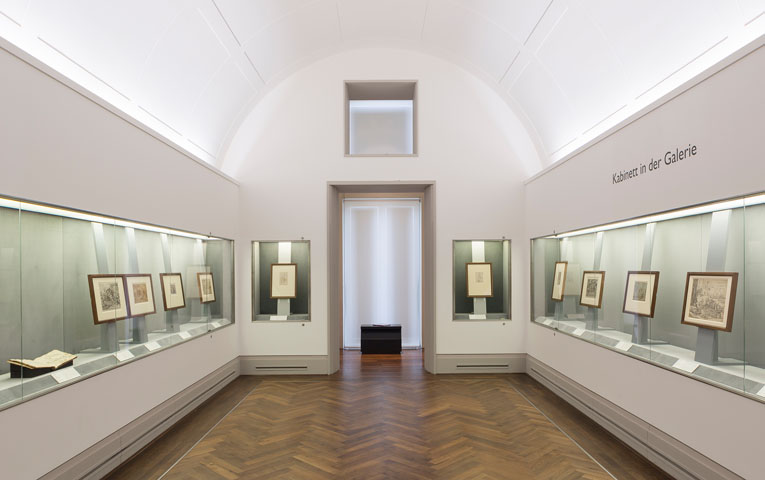

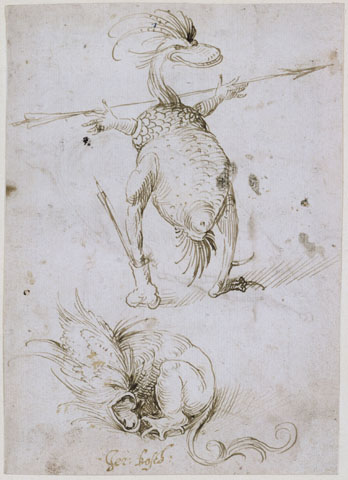

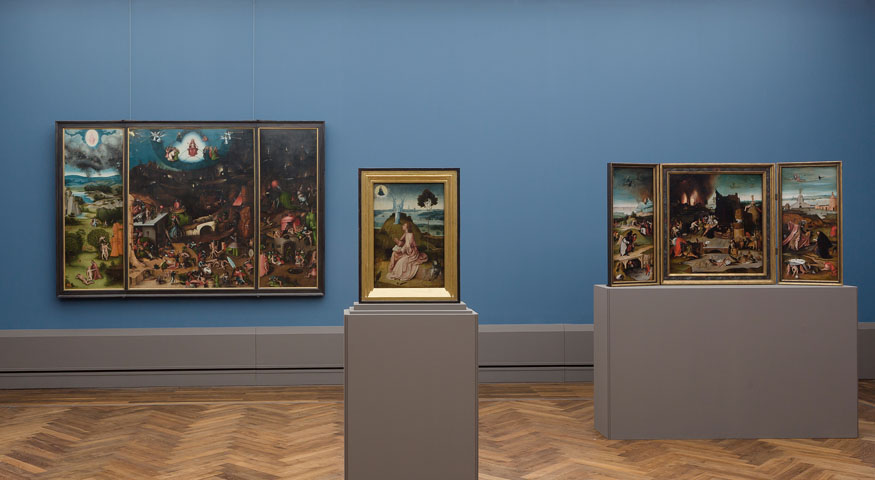

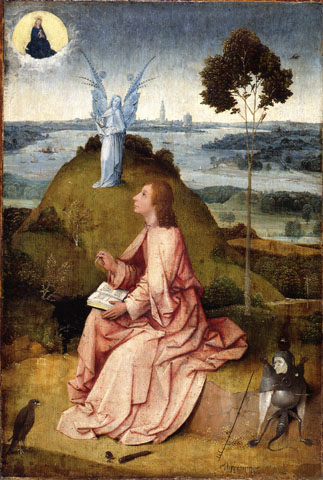

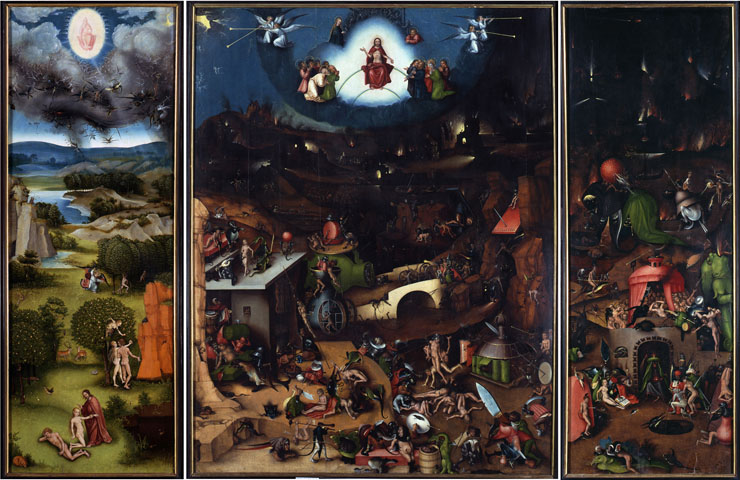

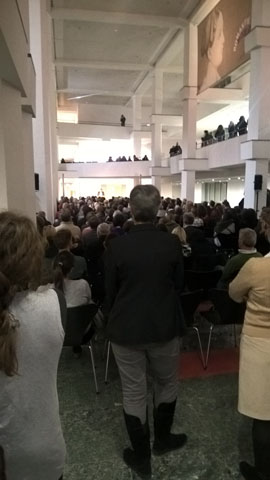
Comments